Spatio-Temporal Assessment of Climate Change Impact on Wave Energy Resources Using Various Time Dependent Criteria
Abstract
1. Introduction
2. Materials and Methods
2.1. Study Area and Data Resources
2.2. Wave Energy Calculation
3. Results and Discussion
3.1. Annual and Seasonal Mean Values and Changes
3.2. Stability of Wave Energy Resources in Nearshore Areas
3.3. Total and Exploitable Storage of Wave Energy
4. Summary and Conclusions
Author Contributions
Funding
Acknowledgments
Conflicts of Interest
References
- Kamranzad, B.; Mori, N. Future wind and wave climate projections in the Indian Ocean based on a super-high-resolution MRI-AGCM3.2S model projection. Clim. Dyn. 2019, 53, 2391–2410. [Google Scholar] [CrossRef]
- Sasaki, W. Predictability of global offshore wind and wave power. Int. J. Mar. Energy 2017, 17, 98–109. [Google Scholar] [CrossRef]
- Sannasiraj, S.A.; Sundar, V. Assessment of wave energy potential and its harvesting approach along the Indian coast. Renew. Energy 2016, 99, 398–409. [Google Scholar] [CrossRef]
- Aboobacker, V.M. Wave energy resource assessment for eastern Bay of Bengal and Malacca Strait. Renew. Energy 2017, 114, 72–84. [Google Scholar] [CrossRef]
- Etemad-Shahidi, A.; Kamranzad, B.; Chegini, V. Wave energy estimation in the Persian Gulf. In Proceedings of the International Conference on Environmental Pollution and Remediation, Ottawa, ON, Canada, 17–19 August 2011. [Google Scholar]
- Mazaheri, S.; Kamranzad, B.; Hajivalie, F. Modification of 32 years ECMWF wind field using QuikSCAT data for wave hindcasting in Iranian Seas. J. Coast. Res. 2013, 344–349. [Google Scholar] [CrossRef]
- Kamranzad, B.; Etemad-Shahidi, A.; Chegini, V. Assessment of wave energy variation in the Persian Gulf. Ocean Eng. 2013, 70, 72–80. [Google Scholar] [CrossRef]
- Kamranzad, B.; Etemad-Shahidi, A.; Chegini, V.; Yeganeh-Bakhtiary, A. Climate change impact on wave energy in the Persian Gulf. Ocean Dyn. 2015, 65, 777–794. [Google Scholar] [CrossRef]
- Kamranzad, B.; Etemad-Shahidi, A.; Chegini, V. Developing an optimum hotspot identifier for wave energy extracting in the northern Persian Gulf. Renew. Energy 2017, 114, 59–71. [Google Scholar] [CrossRef]
- Kamranzad, B. Persian Gulf zone classification based on the wind and wave climate variability. Ocean Eng. 2018, 169, 604–635. [Google Scholar] [CrossRef]
- Mahmoodi, K.; Ghassemi, H.; Razminia, A. Temporal and spatial characteristics of wave energy in the Persian Gulf based on the ERA5 reanalysis dataset. Energy 2019, 187, 115–991. [Google Scholar] [CrossRef]
- Langodan, S.; Viswanadhapalli, Y.; Dasari, H.P.; Knio, O.; Hoteit, I. A high-resolution assessment of wind and wave energy potentials in the Red Sea. Appl. Energy 2016, 181, 244–255. [Google Scholar] [CrossRef]
- Aboobacker, V.M.; Shanas, P.R.; Alsaafani, M.A.; Albarakati, A.M.A. Wave energy resource assessment for Red Sea. Renew. Energy 2017, 114, 46–58. [Google Scholar] [CrossRef]
- Hammar, L.; Ehnberg, J.; Mavume, A.; Cuamba, B.C.; Molander, S. Renewable ocean energy in the Western Indian Ocean. Renew. Sustain. Energy Rev. 2012, 16, 4938–4950. [Google Scholar] [CrossRef]
- Lavidas, G.; Venugopal, V. Prospects and applicability of wave energy for South Africa. Int. J. Sustain. Energy 2018, 37, 230–248. [Google Scholar] [CrossRef]
- Kamranzad, B.; Etemad-Shahidi, A.; Chegini, V. Sustainability of wave energy resources in southern Caspian Sea. Energy 2016, 97, 549–559. [Google Scholar] [CrossRef]
- Taylor, K.E.; Stouffer, R.J.; Meehl, G.A. An Overview of CMIP5 and the experiment design. Bull. Am. Meteorol. Soc. 2012, 93, 485–498. [Google Scholar] [CrossRef]
- Seemanth, M.; Bhowmick, S.A.; Kumar, R.; Sharma, R. Sensitivity analysis of dissipation parameterizations in a third-generation spectral wave model, WAVEWATCH III for Indian Ocean. Ocean Eng. 2016, 124, 252–273. [Google Scholar] [CrossRef]
- Aguiar-González, B.; Ponsoni, L.; Ridderinkhof, H.; van Aken, H.M.; de Ruijter, W.P.M.; Maas, L.R.M. Seasonal variation of the South Indian tropical gyre. Deep Sea Res. Part I Oceanogr. Res. Pap. 2016, 110, 123–140. [Google Scholar] [CrossRef]
- Young, I.R. Seasonal variability of the global ocean wind and wave climate. Int. J. Climatol. 1999, 19, 931–950. [Google Scholar] [CrossRef]
- Mizuta, R.; Yoshimura, H.; Murakami, H.; Matsueda, M.; Endo, H.; Ose, T.; Kamiguchi, K.; Hosaka, M.; Sugi, M.; Yukimoto, S.; et al. Climate Simulations Using MRI-AGCM3.2 with 20 km Grid. J. Meteorol. Soc. Jpn. Ser. II 2012, 90A, 233–258. [Google Scholar] [CrossRef]
- Booij, N.; Ris, R.C.; Holthuijsen, L.H. A third-generation wave model for coastal regions: 1. Model description and validation. J. Geophys. Res. Ocean. 1999, 104, 7649–7666. [Google Scholar] [CrossRef]
- Hibbard, K.A.; Meehl, G.A.; Cox, P.M.; Friedlingstein, P. A strategy for climate change stabilization experiments. Eos Trans. Am. Geophys. Union 2007, 88, 217–221. [Google Scholar] [CrossRef]
- Moss, R.H.; Edmonds, J.A.; Hibbard, K.A.; Manning, M.R.; Rose, S.K.; van Vuuren, D.P.; Carter, T.R.; Emori, S.; Kainuma, M.; Kram, T.; et al. The next generation of scenarios for climate change research and assessment. Nature 2010, 463, 747–756. [Google Scholar] [CrossRef] [PubMed]
- Hughes, M.G.; Heap, A.D. National-scale wave energy resource assessment for Australia. Renew. Energy 2010, 35, 1783–1791. [Google Scholar] [CrossRef]
- Abbaspour, M.; Rahimi, R. Iran atlas of offshore renewable energies. Renew. Energy 2011, 36, 388–398. [Google Scholar] [CrossRef]
- Zhou, G.; Huang, J.; Yue, T.; Luo, Q.; Zhang, G. Temporal-spatial distribution of wave energy: A case study of Beibu Gulf, China. Renew. Energy 2015, 74, 344–356. [Google Scholar] [CrossRef]
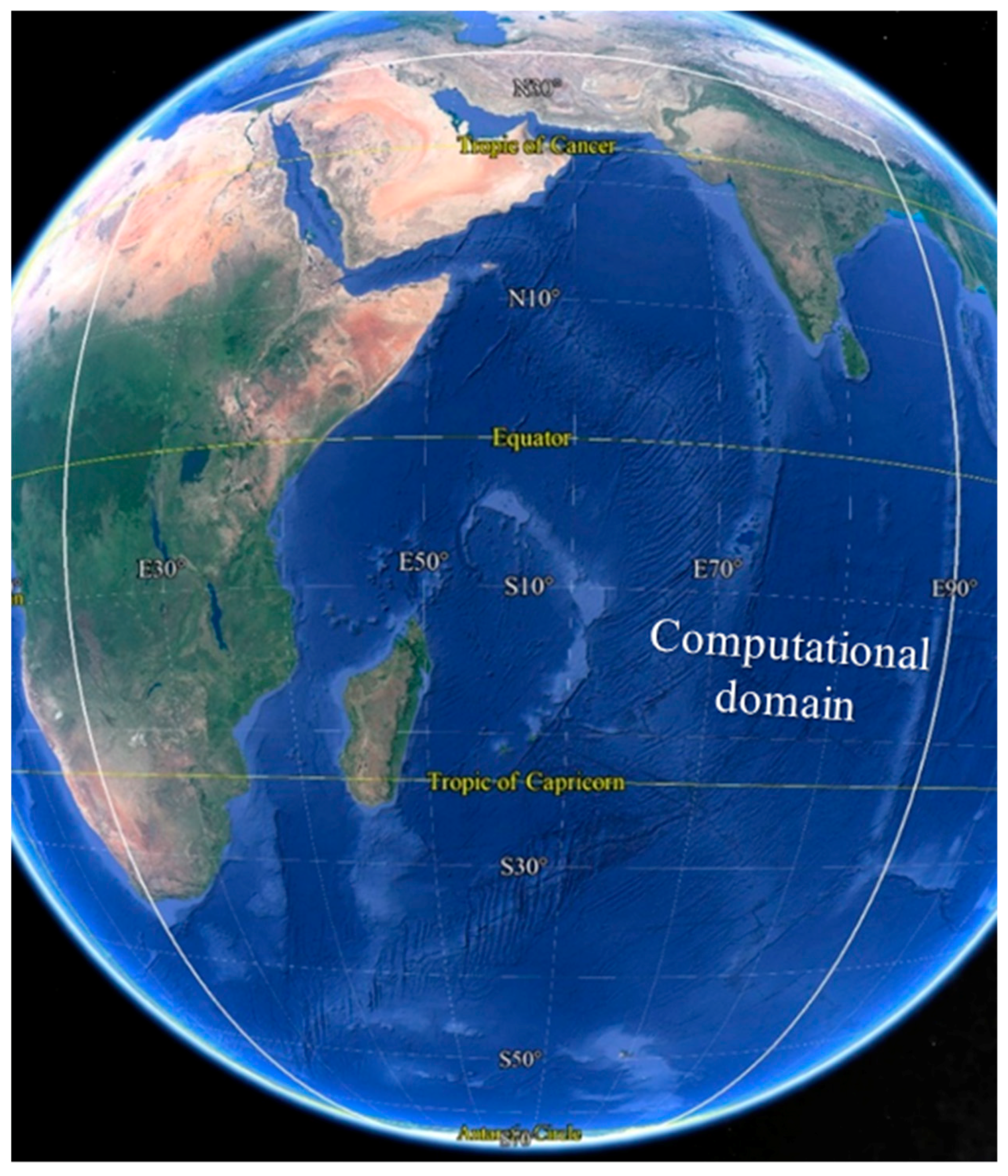
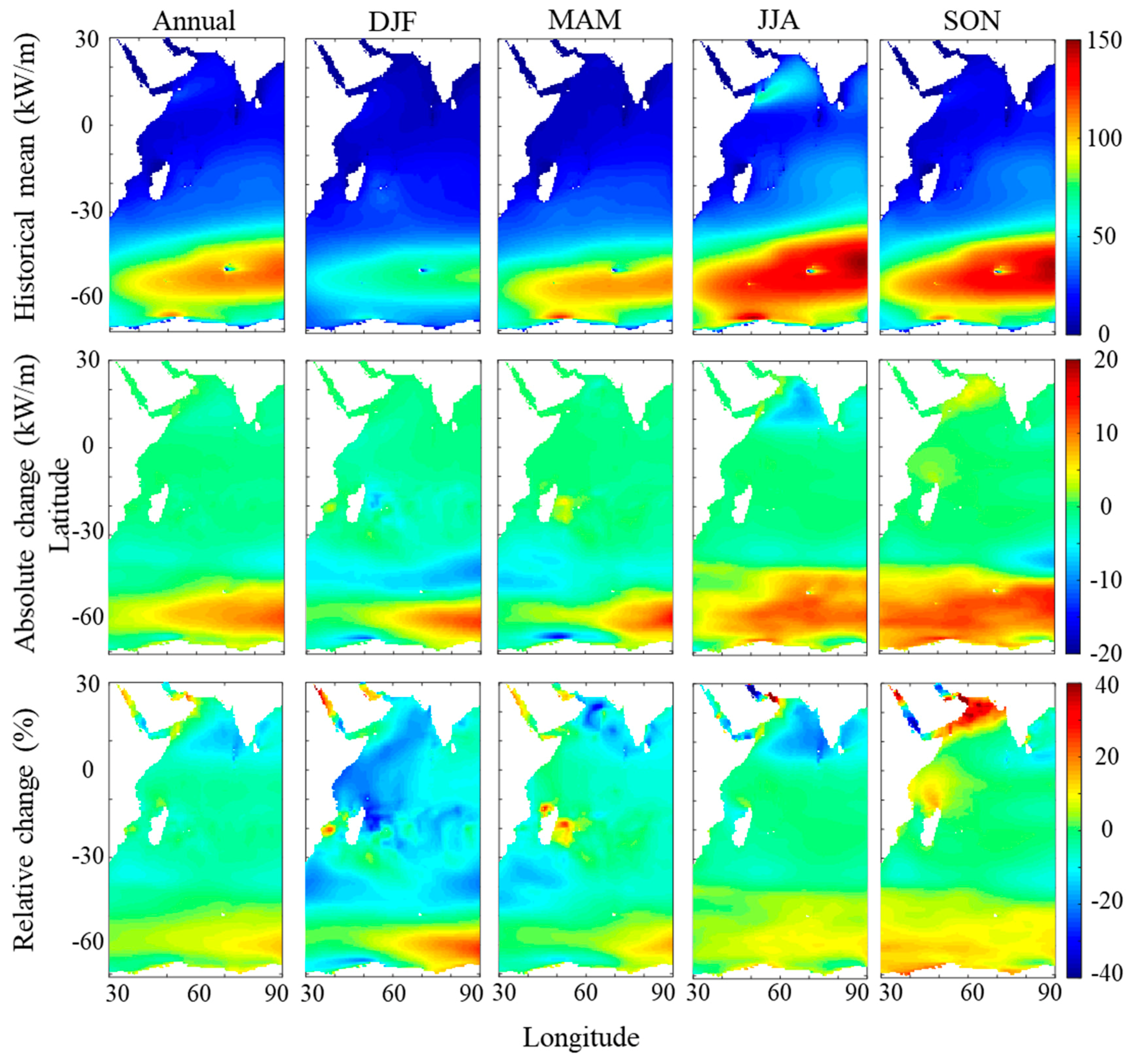
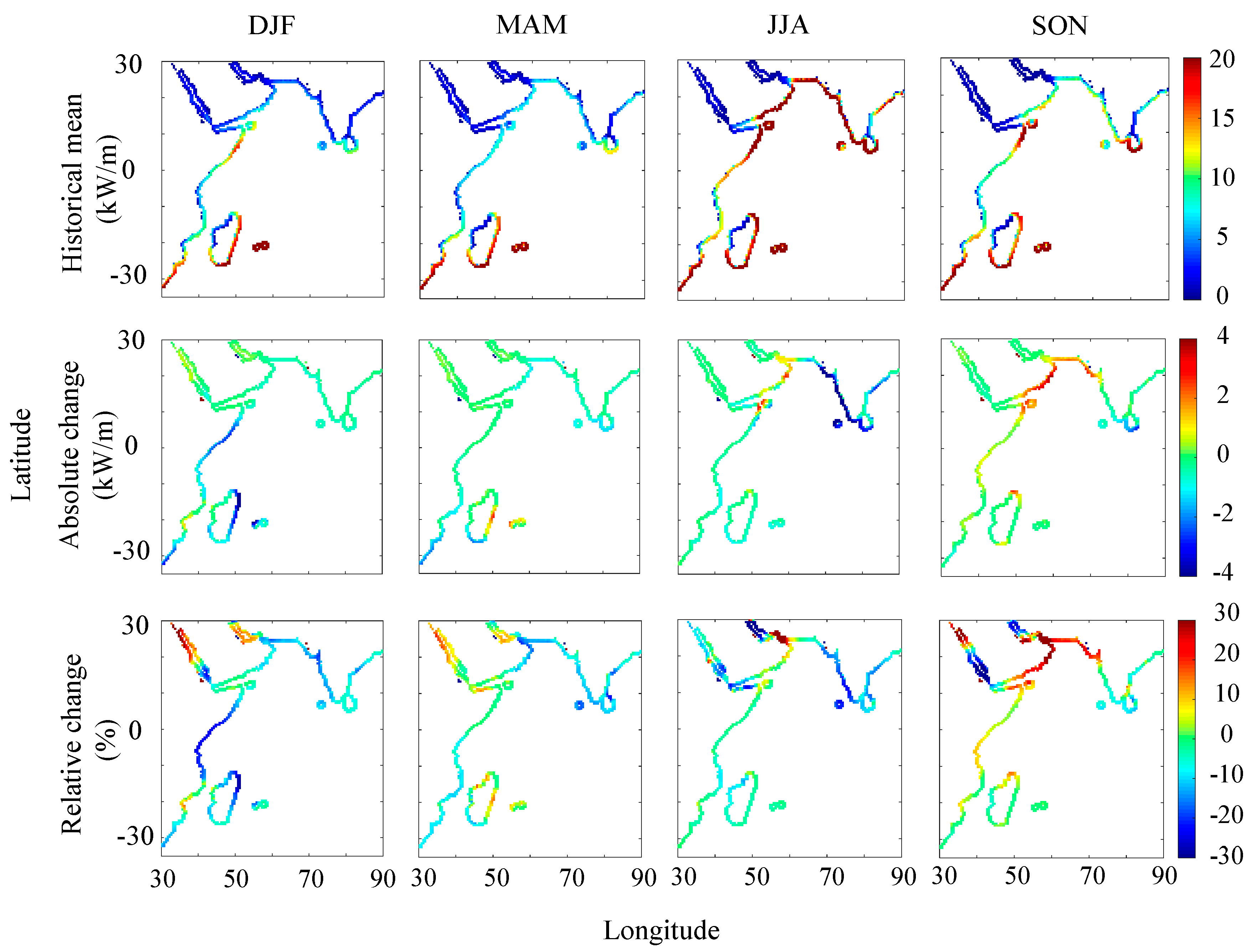
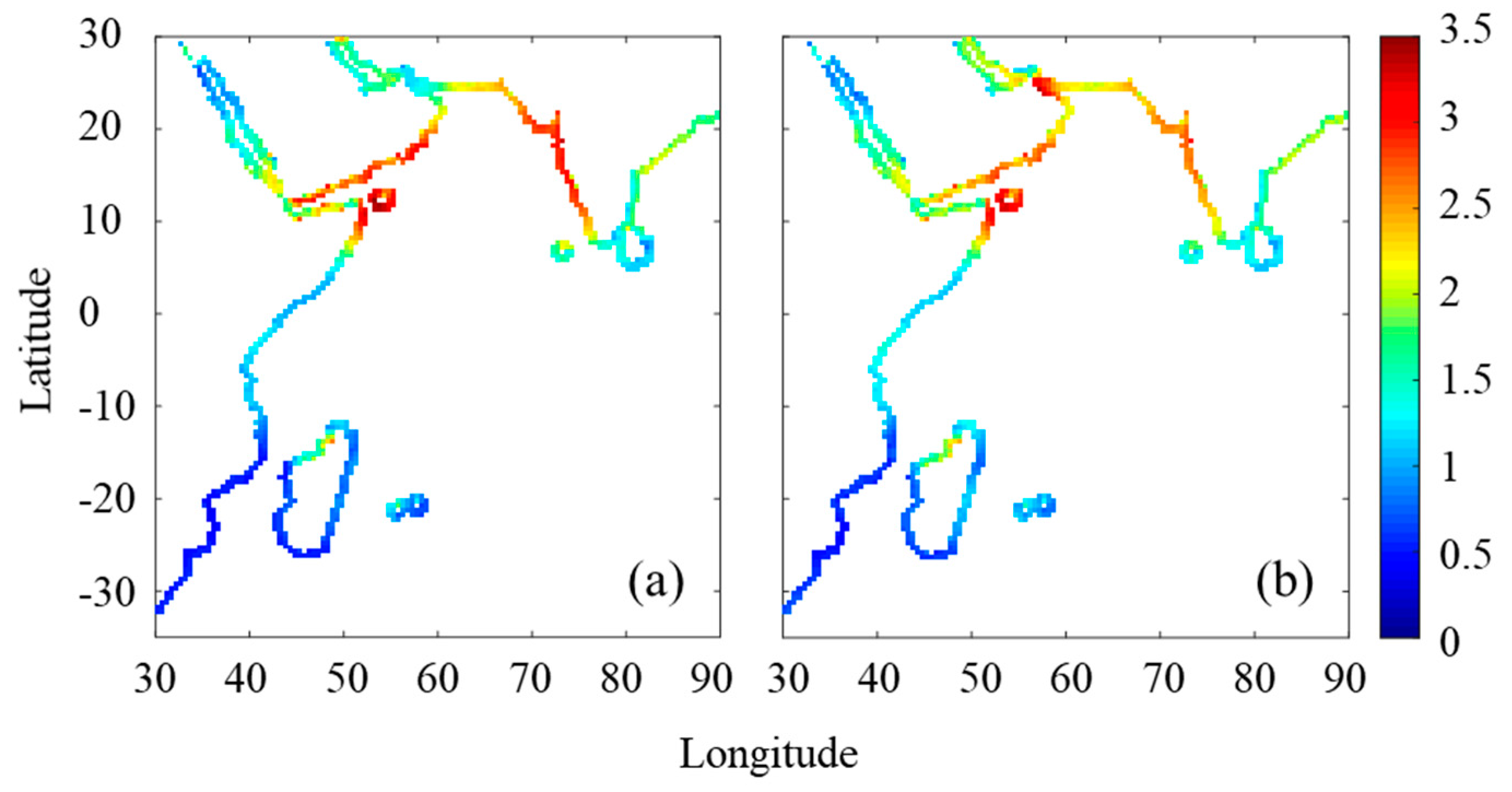
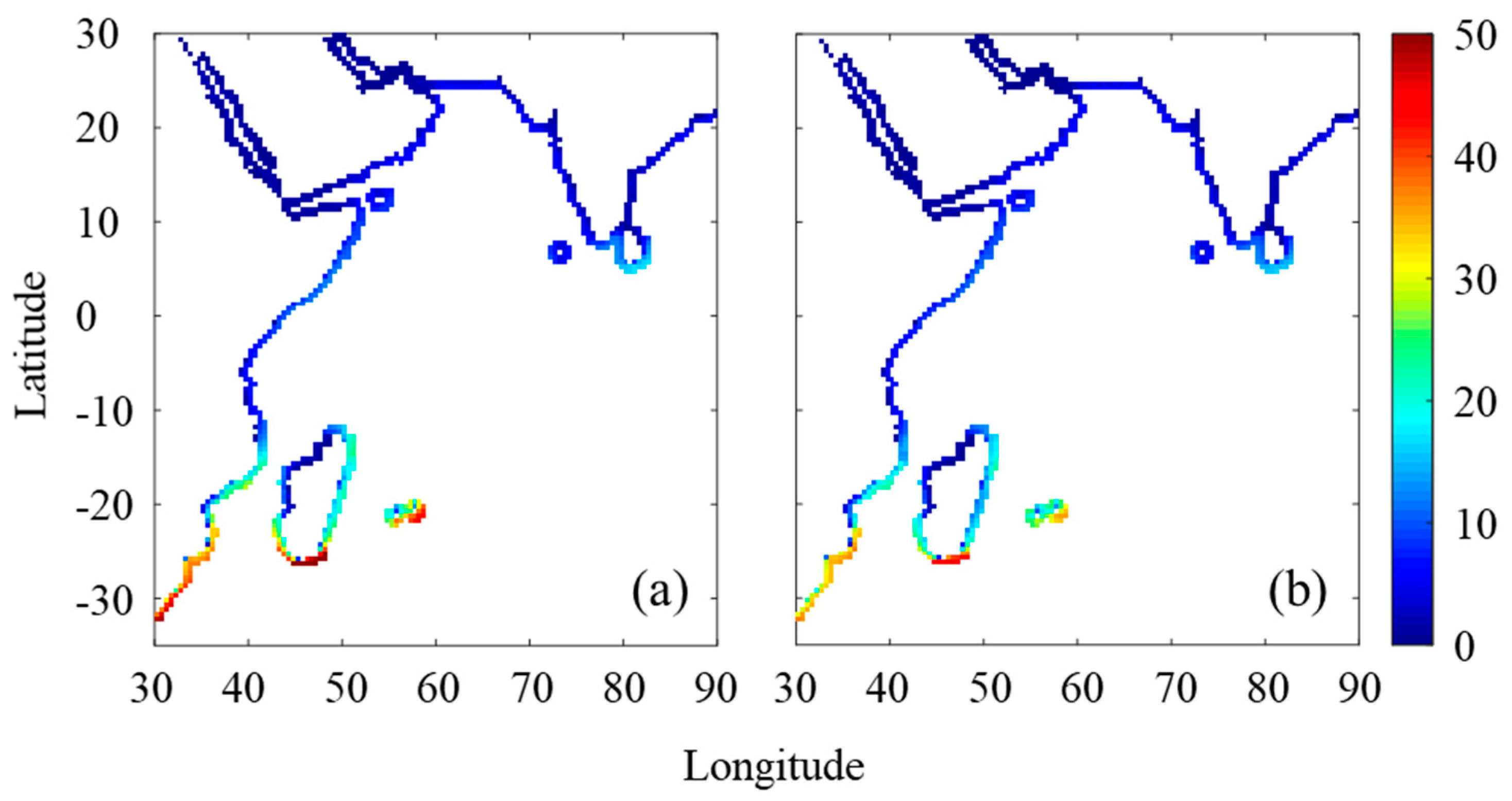
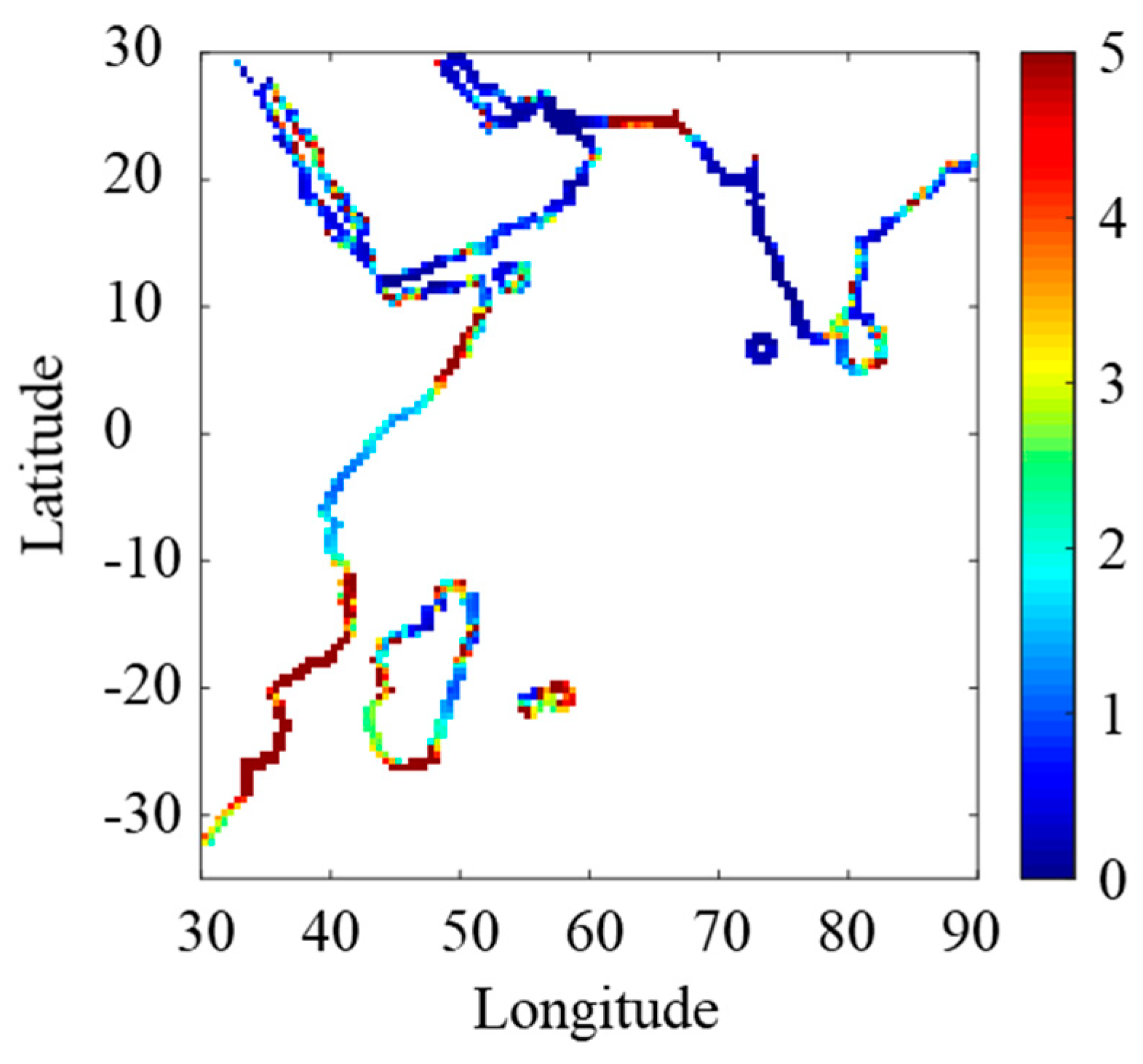
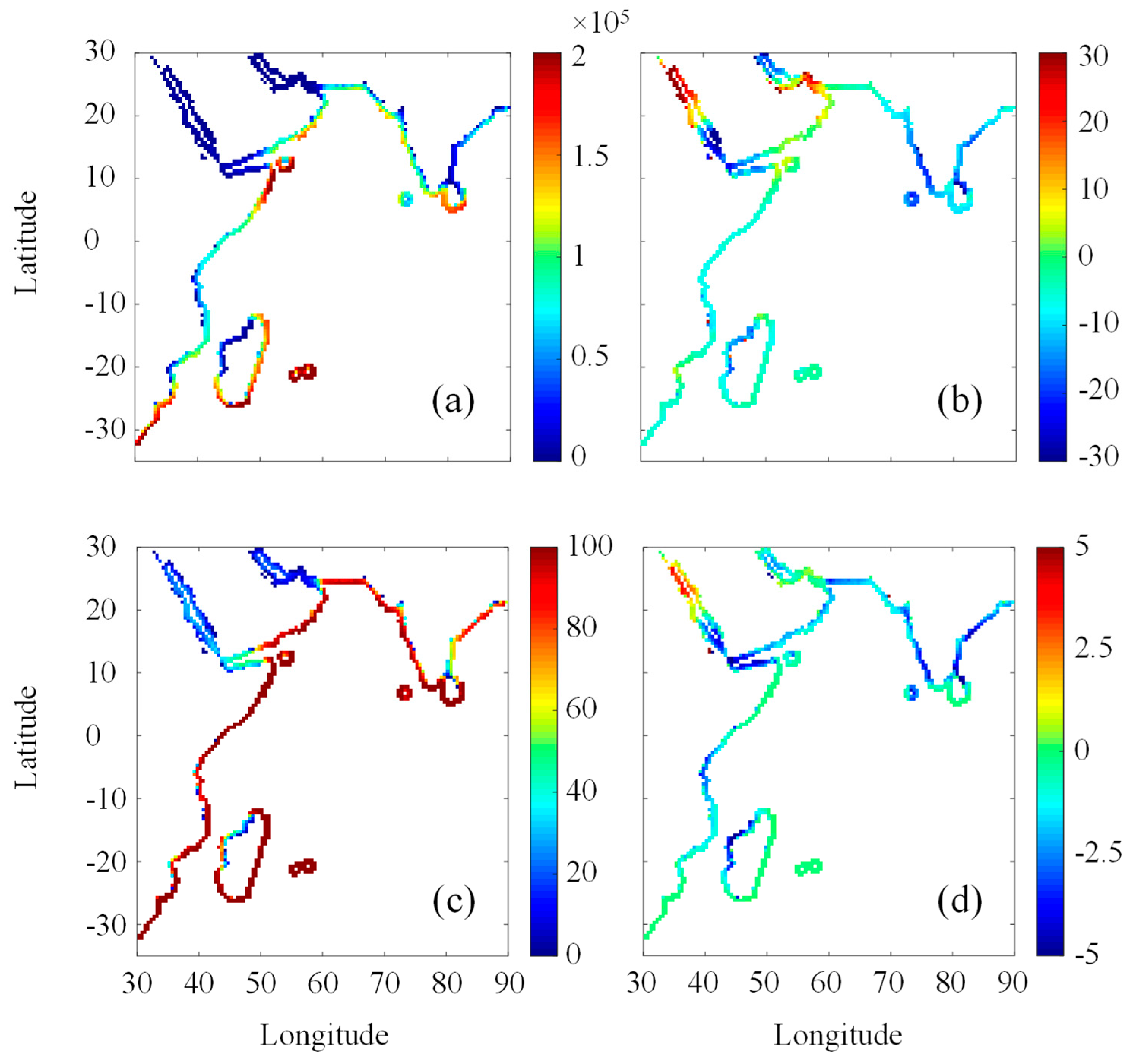
© 2020 by the authors. Licensee MDPI, Basel, Switzerland. This article is an open access article distributed under the terms and conditions of the Creative Commons Attribution (CC BY) license (http://creativecommons.org/licenses/by/4.0/).
Share and Cite
Kamranzad, B.; Lavidas, G.; Takara, K. Spatio-Temporal Assessment of Climate Change Impact on Wave Energy Resources Using Various Time Dependent Criteria. Energies 2020, 13, 768. https://doi.org/10.3390/en13030768
Kamranzad B, Lavidas G, Takara K. Spatio-Temporal Assessment of Climate Change Impact on Wave Energy Resources Using Various Time Dependent Criteria. Energies. 2020; 13(3):768. https://doi.org/10.3390/en13030768
Chicago/Turabian StyleKamranzad, Bahareh, George Lavidas, and Kaoru Takara. 2020. "Spatio-Temporal Assessment of Climate Change Impact on Wave Energy Resources Using Various Time Dependent Criteria" Energies 13, no. 3: 768. https://doi.org/10.3390/en13030768
APA StyleKamranzad, B., Lavidas, G., & Takara, K. (2020). Spatio-Temporal Assessment of Climate Change Impact on Wave Energy Resources Using Various Time Dependent Criteria. Energies, 13(3), 768. https://doi.org/10.3390/en13030768






